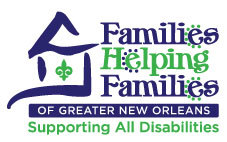IDEA was originally enacted by Congress in 1975 to ensure that children with disabilities have the opportunity to receive a free appropriate public education, just like other children. The law has been revised many times over the years.
The most recent amendments were passed by Congress in December 2004, with final regulations published in August 2006 (Part B for school-aged children) and in September 2011 (Part C, for babies and toddlers). The law has a long, detailed, and powerful history.
IDEA: Individuals with Disabilities Education Act: History and Summary
Summaries of IDEA
If you’re looking for summaries of what the law requires (rather than its word-for-word statute or regulations) here is a brief summary from the Electronic Code of Federal Regulations.
Part C of IDEA – Services for babies and toddlers to the third birthday: Regulations for Part C of IDEA state must have a “comprehensive child find system” with the purpose of identifying, locating, and evaluating all infants and toddlers with disabilities birth to age three as early as possible. The system must be consistent with Part B and meet the additional requirements of 34 CFR §303.302. Summary of “comprehensive child find system”:
- The lead agency with the assistance of the state interagency coordinating council ensures that the system is coordinated with all other major efforts to locate and identify young children by other state agencies and programs including MCH Home Visiting Programs, EPSDT, health, Children’s Health Insurance Program (CHIP), Early Hearing Detection and Intervention (EDHI), education, Early Head Start, child protection and child welfare programs including foster care and CAPTA, programs that provide services under the Family Violence Prevention and Services Act, child care programs, and tribal agencies.
- It addresses the definition of eligibility (34 CFR §303.21) and standards for appropriately identifying infants and toddlers with disabilities.
- It includes pre-referral procedures, the public awareness program (34 CFR §303.301), central directory (34 CFR §303.117); referral procedures, timelines and participation by the primary referral sources (34 CFR §303.303), post-referral procedures including screenings, evaluations, assessments, and timelines.
It targets primary referral sources including hospitals, including prenatal and postnatal care facilities, physicians, parents, child care programs and early learning programs, local education agencies and schools, public health facilities, social service agencies and other clinic and health care providers, public agencies and staff in the child welfare system, including child protective services and foster care, homeless family shelters and domestic violence shelters and agencies.
Part B of IDEA – Services for school-aged children, including preschoolers: The Child Find regulations for Part B of IDEA (34 CFR §300.111) requires a state to have policies and procedures to ensure that
- All children with disabilities residing in the State, including children with disabilities who are homeless children or are wards of the State, and children with disabilities attending private schools, regardless of the severity of their disability, and who are in need of special education and related services, are identified, located, and evaluated
Child find also must include:
- children who are suspected of being a child with a disability under 34 CFR §300.8 and in need of special education, even though they are advancing from grade to grade, and;
- highly mobile children, including migrant children.
Exact Words of IDEA Itself
Reading IDEA’s verbatim language can be a big help in understanding why local practices in schools and early childhood settings are as they are. Here is the place to connect with that language. Use the links below to explore the actual words of our nation’s special education law.
Access the entire IDEA law
PDF version | HTML version
Part C Regulations: Early Childhood Intervention for Babies and Toddlers
HTML version
Part B Regulations: Services for School-Aged Children
PDF version | HTML version
Guidance on IDEA from the U.S. Department of Education
The Office of Special Education Programs (OSEP) at the U.S. Department of Education regularly provides guidance to the field on IDEA. All are intended to clarify elements of the law and its regulations and are an important part of understanding IDEA and how to implement it. To connect with this federal guidance, visit IDEA Guidance from the DOE.
Part B State Performance Plans (SPP) Letters and Annual Performance Report (APR) Letters
The reauthorized Individuals with Disabilities Education Act (IDEA), signed on December 3, 2004, required that, not later than one year after the date of enactment of the reauthorized IDEA, each state is required to have in place a performance plan evaluating the state’s implementation of Part B and describing how the state will improve such implementation. This plan is called the Part B State Performance Plan (SPP) and is required to be posted on the state’s website.
In addition, each state reports annually to the public on the performance of each of its local educational agencies according to the targets in its SPP. The state also reports annually to the Secretary on its performance in meeting its SPP targets. This report is called the Part B Annual Performance Report (APR), this report must also be posted on the state’s website.
Resources
10 Basics of the Special Education Process under IDEA
FHF of GNOs printable pdf of the 10 basics of the special education process under IDEA.
Sources: Center for Parent Information and Resources http://www.parentcenterhub.org/, Electronic Code of Federal Regulations, United States Department of Education.
